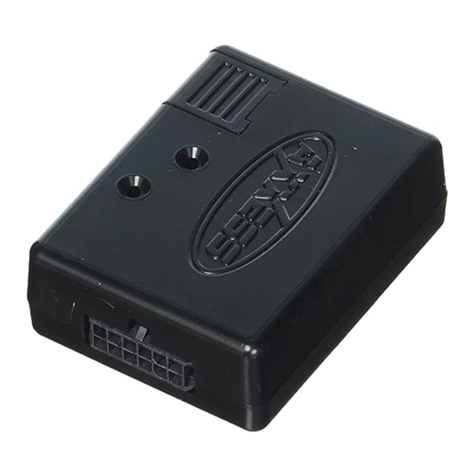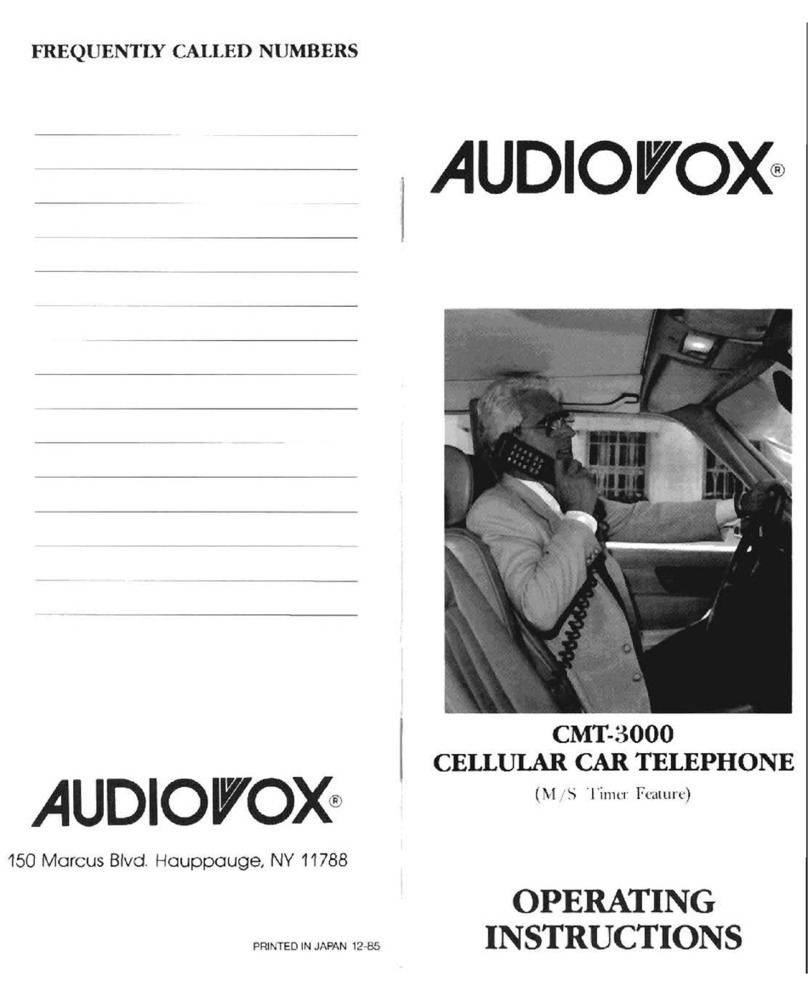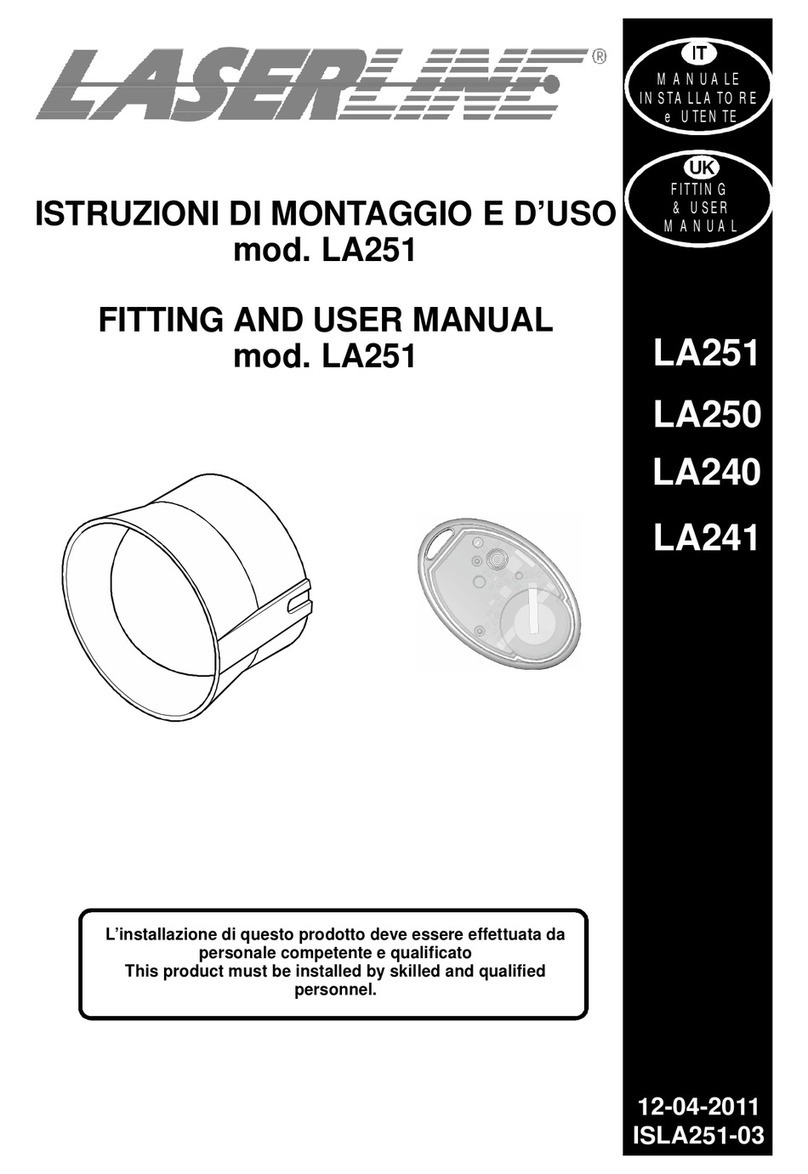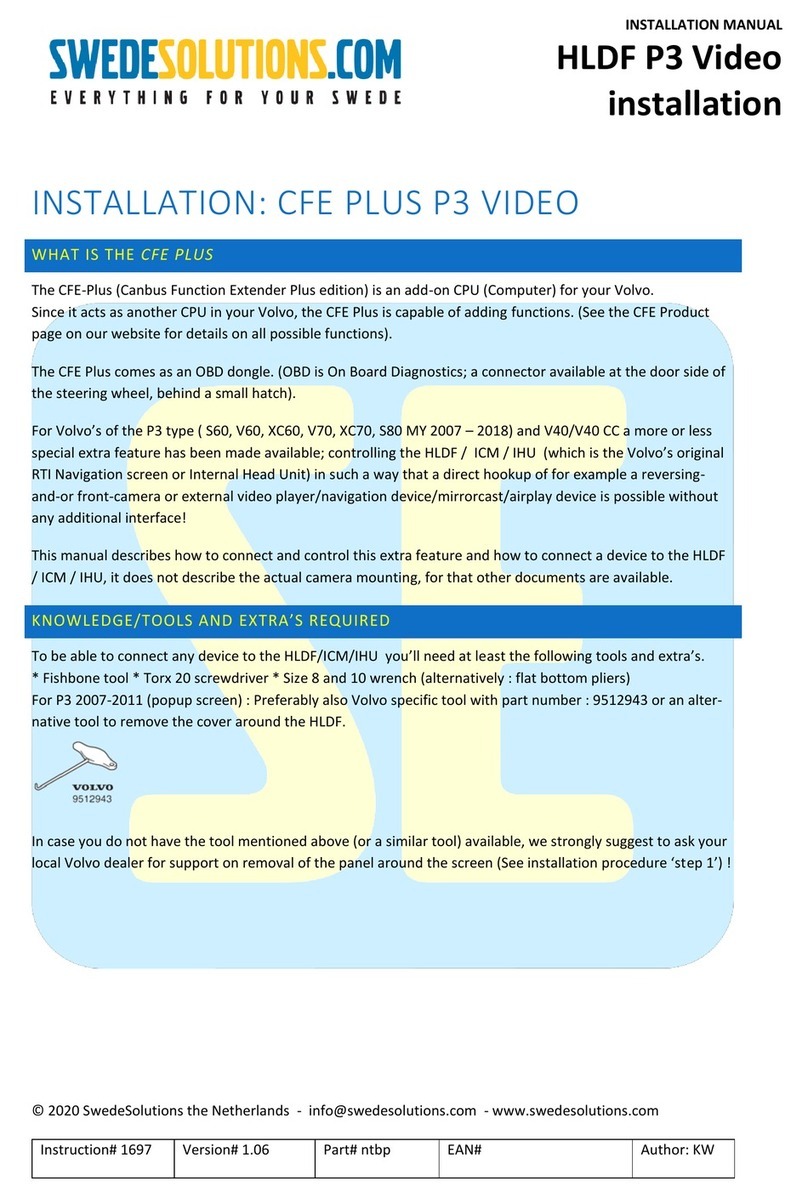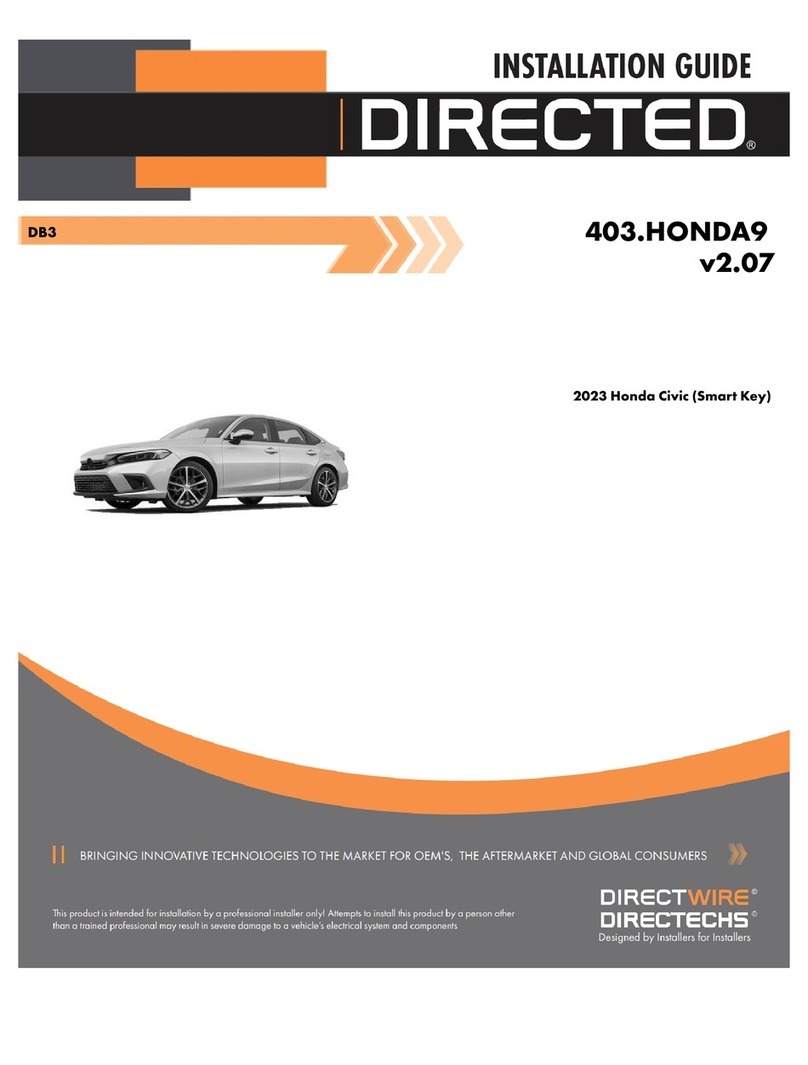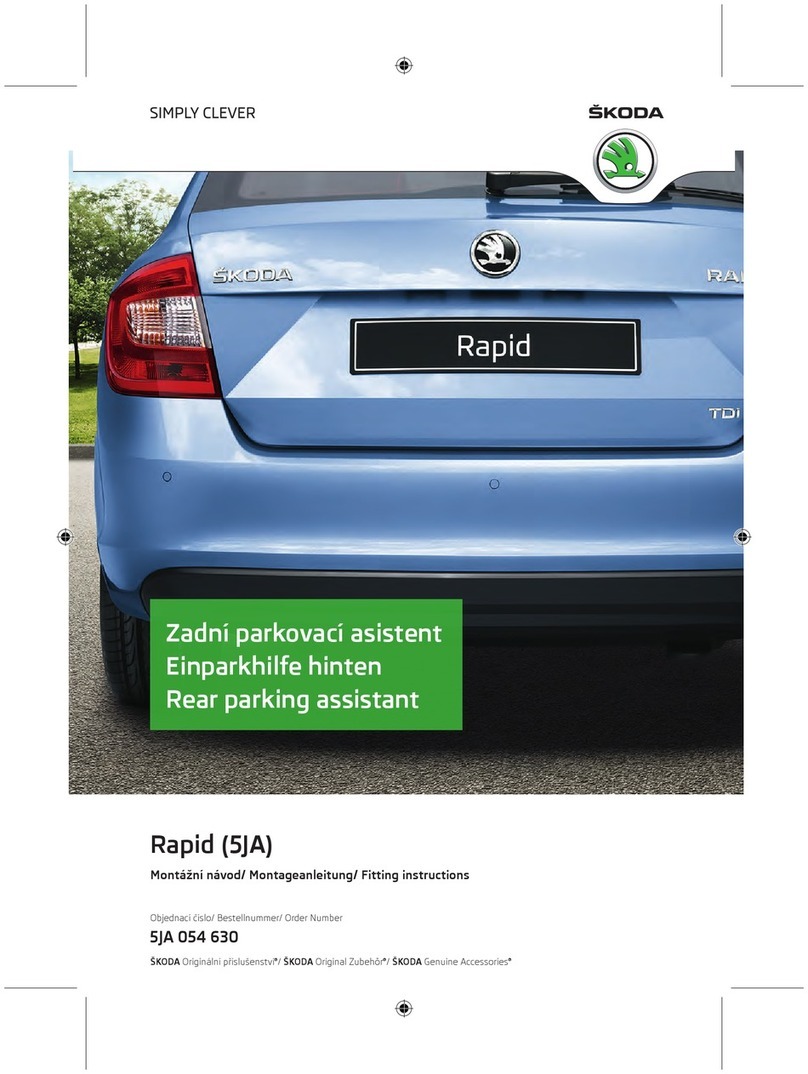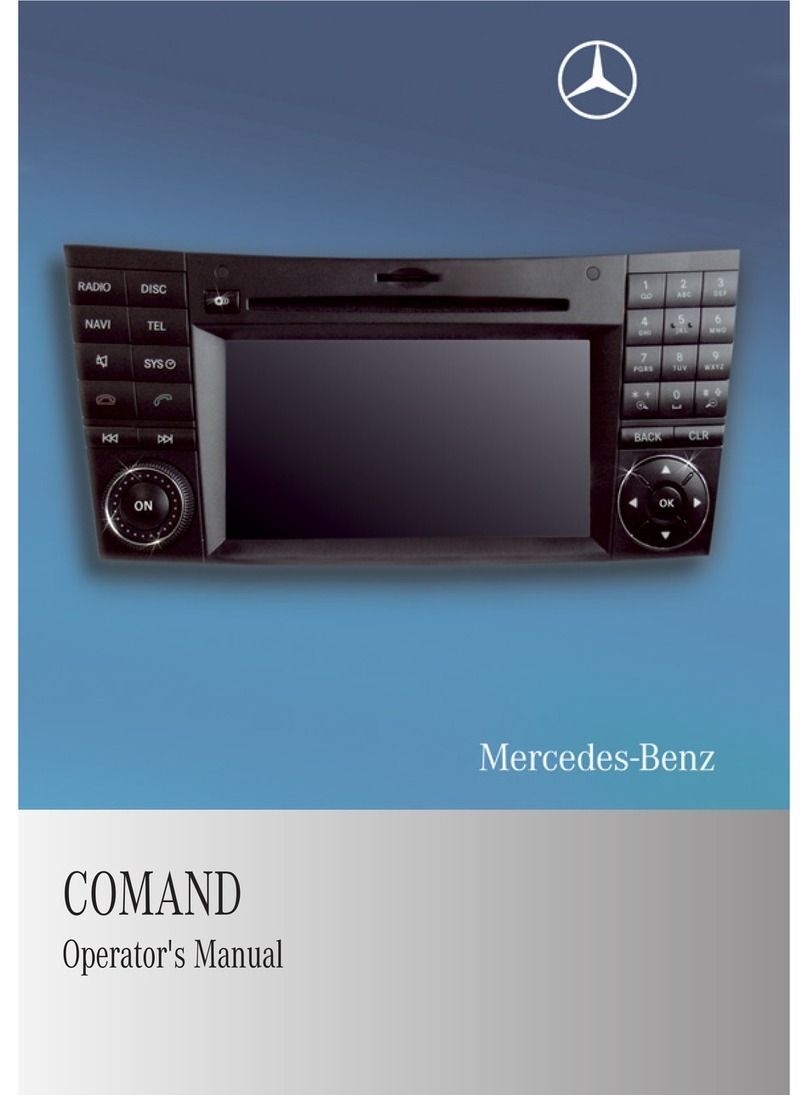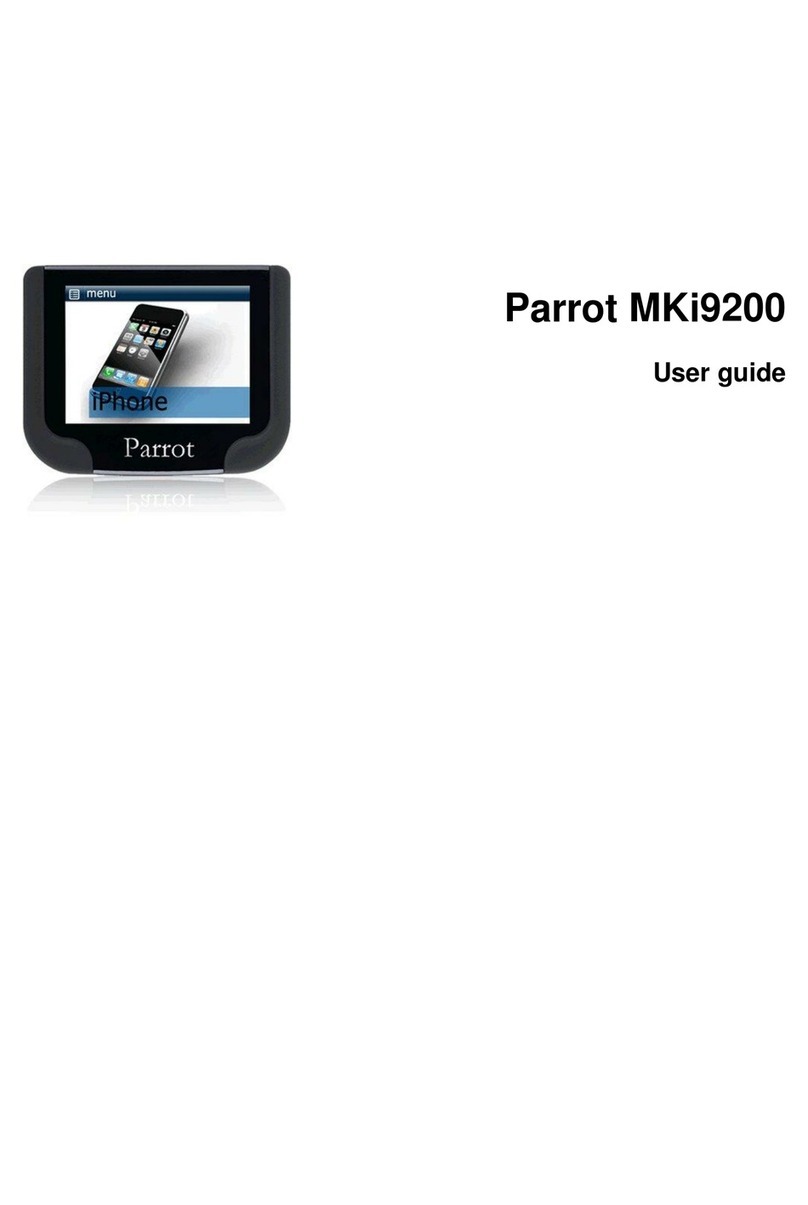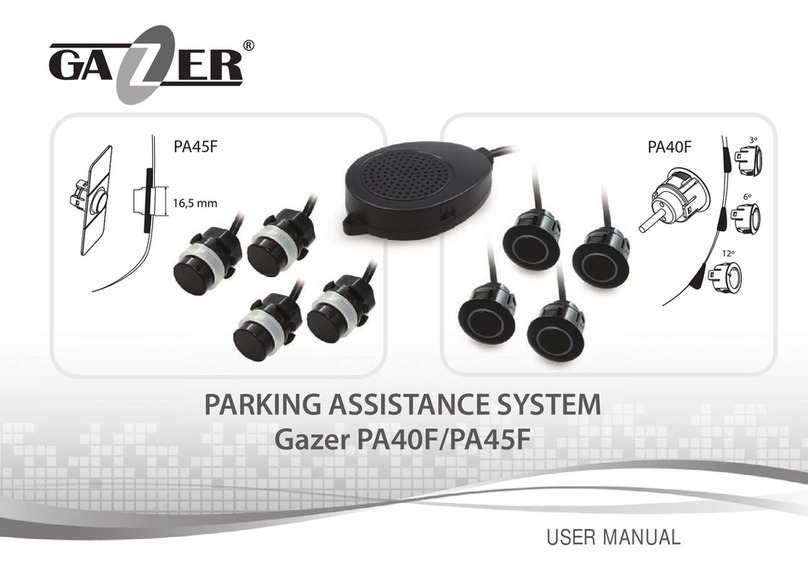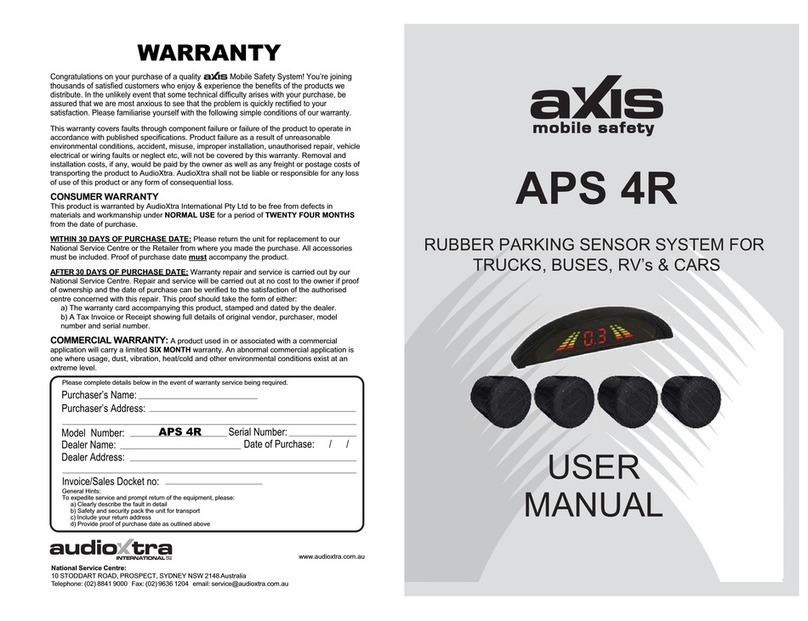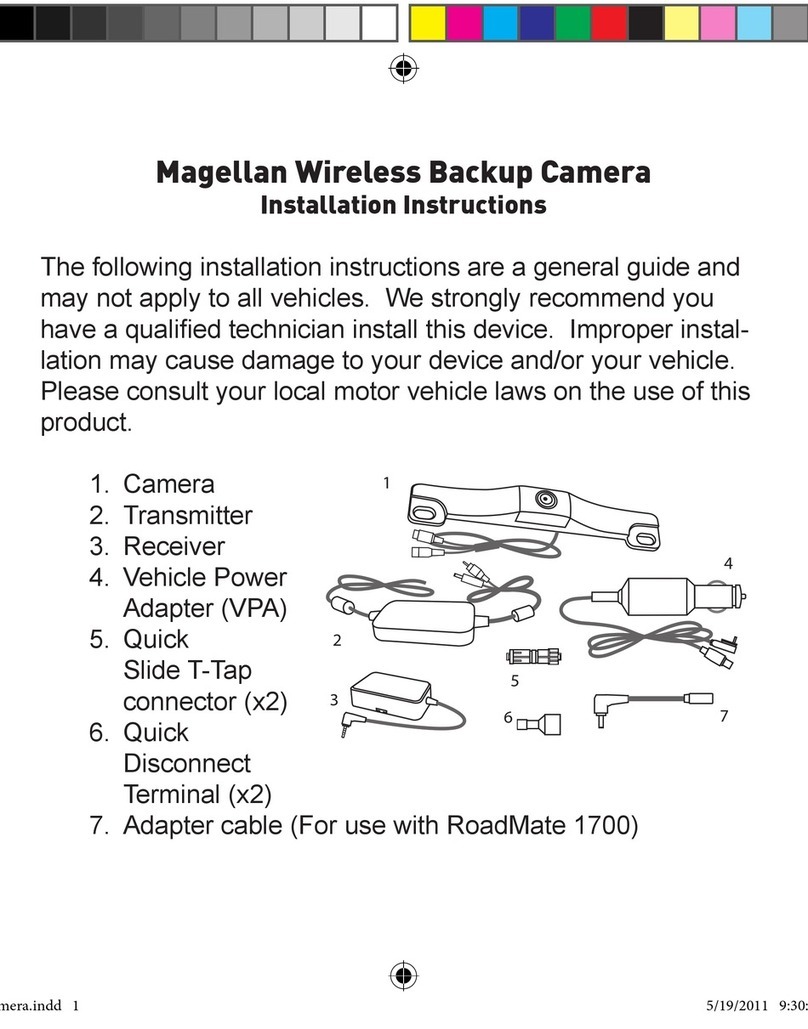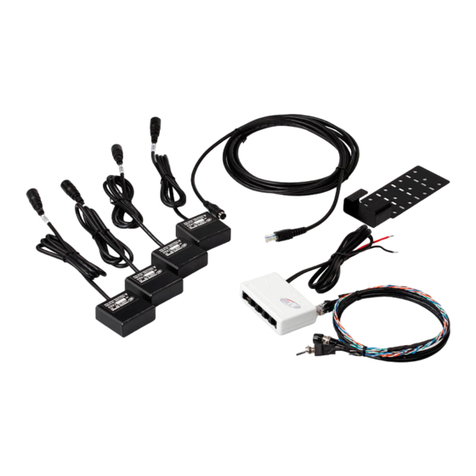Tobe SafePark EPS Operating manual

WORKING PRINCIPLE
SAFE-PARK EPS®
is a unique parking aid enabling
close-to-bumper manoeuvring.
By its antenna-sensor,
which covers the whole bumper,
EPS®emits electromagnetic waves
of low intensity - thus generating
all around this bumper an unbroken
(electrostatic) zone of protection.
As long as the distance
between antenna and obstacle
is just decreasing,
EPS®signalizes by its 3-grade
warning sequence such obstacles,
which enter into this unbroken zone
and absorb its field energy.
BEFORE USE, READ AND OBSERVE ALL INSTRUCTIONS
02 1728
European Type-Approval
by German Kraftfahrt-Bundesamt
e1
SAFE-PARK E.P.S.®
manoeuvring- and parking-aid
with antenna-sensor inside a
PVC bumper-protection strip
signalizes actively approach of or to obstacles,
from 50 cm distance up to the bumper's brim,
with 3-grade acoustical warning-sequence,
and with RISK-ALARM in case of too high speed
and protects passively by the PVC-bumper-strip
USER AND INSTALLATION MANUAL
EASY AND FAST FITTING
Electrically, just connect EPS®to a switchable
power supply of the vehicle. (In case of back-
bumper: to the reversing lamp. In case of front
bumper: by a luminous switch to ignition-plus.)
AND FITTING-COMPONENTS
•Central unit:(A): To be fixed inside the car in
a dry place, close to the antenna connection.
•Loudspeaker(B): Ø 25mm, in driver's cab.
•Antenna, here included in the self-adhesive
bumper protection strip (C), 2.5m long, with
welded antenna-wire (D) and 2 terminals (E):
To be fitted on the plastic bumper, finally
covering the car's whole width and its corners.
••Antenna-flex (F). Wiring (G). Mastic (H).
Pinch-connector (K). Flat-connectors (I).
NOTE: In case of PVC strip alone the
components supplied are (C), (D), and (E):

Since EPS®assists to use the very last centimetres,
slow and wary manoeuvring has to be implied !
Switched on by engaging the reverse gear, or by (luminous) switch in case of front
bumper, EPS®tries to calibrate itself and reports its status by a special signal:-
èWait-signal: If a single beep sounds, youmust briefly wait for the next signal.
èDefect-signal:With asequence of alternating high and deep tones EPS®informs
that it cannot operate, and its installation must be checked and repaired.
èOK-signal: 3 different tones indicate that EPS®is ready for operation now !
Only after OK-signal EPS®is ready to signalize obstacles. All kind of shapes
and nearly all materials (NOTE: except "insulators" like plastics, dry wood, glass...)
are signalized, as long as their small distance to the antenna is going on to be
reduced. Material characteristics and approach speed determine, how and at which
distance the obstacle will be signalized. Only very slow approach allows to make
use of the very last centimetres.
In case of slow approach the
3-grade warnings are emitted:-
PRE-ALARM (1): single beeps
of medium pitch warn that the
distance is already below circa
50 - 60 cm. If the distance goes
on decreasing, these beeps are
emitted a little bit more rapidly.
STOP-ALARM (2):a high sound, which will be extended
in case of further approach, warns that the distance is
already below circa 10 - 20 cm, and demands: STOP !
CONTACT-ALARM (3):the deep sound demands
implicitly to BRAKE INSTANTLY, STOP AT SOON.
In case of fast approach a sequence of high beeps (= RISK-ALARM)calls to
brake at soon (only rare, after brief pause, slow manoeuvring can go on with utmost
care), or calls to increase caution, since water flows close to the antenna.- NOTE:-
•Each time after being switched on, EPS®can emit only once the RISK-ALARM.
•EPS®thereby re-adjusts itself. Now PRE-ALARM warnings are not emitted any
more, but the ranges of STOP- and CONTACT-ALARM are enlarged a bit.
•RISK-ALARM can be emitted at any time, even instead of CONTACT-ALARM.
•In presence of (rain-) water on the bumper, the RISK-ALARM can be emitted
once too, in order to minimize emission of further signals caused by water.
IMPORTANT: .. At the arrest of approach, any sound stops immediately.
.. Only very slow manoeuvring (the last centimetres in "snail's pace") enables EPS®
to signalize an approach up to the final centimetres of the bumper's brim.
.. Without causing warning signals, you can manoeuvre with (trailer) hook haul or in
parallel to a side wall, since their distances to the antenna do not decrease.
.Shock absorbers' dumping (when road's unevenness, braking, high speed or...
let the street coat approach to the antenna) or water can cause warning signals.
.When manoeuvring, even if assisted by EPS®, drivers are still obliged to inspect
carefully the surroundings, in order to prevent and not to cause any damages.
EPSEPS®® FUNCTIONFUNCTION

.Only with an antenna-sensor (1.) in optimum
position on thoroughly (2.) prepared and (3.)
cleaned surface, and really (4.) tightly fastened, EPS®can duly operate!
.EPS®only suits for plastic bumpers (back or front).
.Metal close to antenna can (strongly) reduce the EPS®detection range!
.Magnetic or electro-magnetic fields can disturb the operation of EPS®.
1. First, fix outside on the bumper a wire (~ 2m) by adhesive tape, connect it as
antenna. (Connect loudspeaker and 12V, too.) Now test EPS®by approaching
the hands. If you verify proper detection ranges (about 50 cm), the antenna can
be installed in this position. (Otherwise test in another position.) NOTE:-
èAntenna must cover car's whole width, and car's corners, too.
èAntenna must be minimum 40 cm, better 50 cm above road level.
èAntenna must be minimum 20 cm, better 30 cm away from the wheels.
èAntenna must be minimum 3 cm far from car's metal parts.
2. Find an opening (e.g. ventilation) to put the antenna-wire into the car's inside.
a) If the strip covers the bumper up to its
end, the antenna-wire can be laid there
around, by running inside one of the
grooves of a terminal. (See pictures.)
b)If the strip doesn't come up to bumper's end,
drill a small hole into the bumper right there,
where the antenna-wire is welded onto the strip.
By means of a tube-aid (flexible tube or little rod)
thread the antenna-wire into the car's inside.
Now lay the strip against the bumper. Shorten the strip to the length required.
When occasion arises, mark the proper course of the PVC-strip. (See 1. too.)
3.
By using non-aggressive solvent (like alcohol) clean and degrease
thoroughly the bumper's surface, onto which PVC-strip will be fitted.
4. NOTE: When sticking-on, temperature shall not be below 18°C. (Hair dryer ?).
NOTE: Avoid fitting the PVC strip onto metal parts.
i) Gradually remove the (adhesive part's) paper from the strip, and fit the strip
starting at the end with the welded wire. Complete it with the 2 terminals.
ii)Press down tightly the PVC strip with your hands (and a cloth). 12 hours later
on press it down tightly once more.
NOTE: Avoid washing your car during the first three days after the installation.
5. Central unit to be fastened inside the car in a dry place, close to the antenna
connection. Keep plug accessible.
Shorten antenna-wire to the length required.
Stabilize it (plastic tube). Connect it by flat-
or pinch-connector to the antenna-flex
(shorten that one, too, and twist together
both leads), and plug it to the central unit.
Loudspeaker to be fixed inside driver's cabin.
Car's electrics: EPS®must be switchable ON/OFF either by +12V or by earth:
RED wire to +12V (e.g. reversing lamp, resp. +15), BLACK to a valid ground.
INSTALLATIONINSTALLATION

1.) Switch on ignition, engage reverse gear. (Resp. in case of antenna installed in
the front bumper: Power device by the recommended luminous switch.)
2.) If EPS®can calibrate and adjust itself, the OK-signal (= 3 tones with different
pitch each) indicates that EPS®is ready for operation. - .Otherwise:-
1.1.
The
DEFECT
-signal (=alternating high and deep tones) informs that EPS®
cannot operate, and e.g. antenna's connection must be checked and repaired.
2.2. If the loudspeaker does not emit any sound at all, check it itself, its wires and
its connections (as well as the feeding connections to +12V and ground).
3.) Then, while the car is not moving, verify the 3 detection ranges. Slowly and
continuously approach towards antenna. At 50 cm distance single PRE-ALARM
beeps (medium) should start, succeeding faster then, around 20 cm proceeding
in the high (extending) STOP-ALARM, and finally in the deep CONTACT-ALARM.
NOTE: If, in case of fast approach, RISK-ALARM (fast sequence of high beeps)
sounds, PRE-ALARM-beeps are not emitted anymore. (Switch on EPS®anew.)
3.a3.a If range of PRE-ALARM is much smaller than 50 cm, check and enlarge - if
possible - the distance between antenna and car's metal, - and if need be...
3.b3.b fix (provisionally first) and connect in parallel a 2nd antenna (wire, alu-tape).
If the range remains too small, vary the distance between both antennas.
4.) If operation of EPS®is correct in case of non-moving vehicle, now verify by
driving carefully and slowly that in moving vehicle EPS®duly operates, too.
4.4. If there is no acoustic signal at all, fix ground connection directly to car's body.
5.5. If slow driving generates 'senseless' beeps, secure that the antenna-sensor
(incl. antenna-wire, central-unit) is fastened tightly and far enough from road
and wheels, and that nothing is moving within its reach. (NOTE: If need be,
reduce antenna's range by coupling it to ground by resistor of about 50kOhm.)
6.6. If loudspeaker buzzes as long as the engine runs, feed +12V directly from the
gearbox' reversing lamp switch; - or connect a capacity
(220 or 470µF/16V) between ground and +12V feeding of
EPS®, and inhibit by diode (e.g. 1N4148 or 1N4007) that
the capacity may dump towards the car's +12V-electrics.
FINAL TEST PROCEDURE
TROUBLE-SHOOTING
GGENERALENERAL SSECURITYECURITY DDIRECTIONSIRECTIONS FFOROR TTHEHE IINSTALLATIONNSTALLATION::::
•Observe the security directions and injunctions prescribed by car's producer and handicraft.
•When working on the car's electrics, first - if possible - disconnect battery's minus-pole
(negative) to prevent short circuit risks. NOTE: On account of disconnecting car's battery all
transitory memories may loose their programmed data, and may require a re-programming
or new input or adaptation (car- and engine-management, clocks, radios, heaters....).
•Verify electrical voltages and polarities only by diode-volt-tester or voltmeter. Other test-
lamps may damage or unintentionally trigger electr(on)ical components of the car.
•When drilling, take care of existing wires, tubes... and sufficient space for drill's leaving.
•If not well versed in car electrics, it is commendable to let an expert workshop install EPS®.
RRECYCLING DIRECTIONSECYCLING DIRECTIONS:: Ensure to deposit recyclable or environmental harmful
components of electronics according to the regulations. In case of doubt, contact the supplier.
êê SafePark EPS®(with PVC strip) (05/2004) êê TOBÉ GmbH, D-52068 Aachen êê
TECHNICAL DATA operation temperatures: -40 up to +85°C
power supply: 10.5V up to 18 V
consumption: 40 mA up to 150 mA (deep sound)
Table of contents
